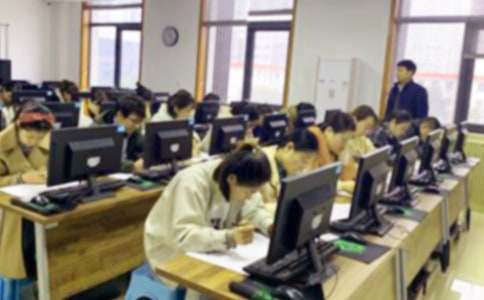- 相關推薦
2017年英語專四考試閱讀復習指導
形成天才的決定因素應該是勤奮。以下是小編為大家搜索整理的2017年英語專四考試閱讀復習指導,想了解更多精彩內容請及時關注我們應屆畢業生考試網!

A controversy erupted in the scientific community in early 1998 over the use of DNA (deoxyribonucleic acid ) fingerprinting in criminal investigations. DNA fingerprinting was introduced in 1987 as a method to identify individuals based on a pattern seen in their DNA, the molecule of which genes are made. DNA is present in every cell of the body except red blood cells. DNA fingerprinting has been used successfully in various ways, such as to determine paternity where it is not clear who the father of a particular child is. However, it is in the area of criminal investigations that DNA fingerprinting has potentially powerful and controversial uses.
DNA fingerprinting and other DNA analysis techniques have revolutionized criminal investigations by giving investigators powerful new tools in the attempt to trove guilt, not just establish innocence. When used in criminal investigations, a DNA fingerprint pattern from a suspect is compared with a DNA fingerprint pattern obtained from such material as hairs or blood found at the scene of a crime. A match between the two DNA samples can be used as evidence to convict a suspect.
The controversy in 1998 stemmed form a report published in December 1991 by population geneticists Richard C. Lewontin of Harvard University in Cambridge, Mass., and Daniel L. Hartl called into question the methods to calculate how likely it is that a match between two DNA fingerprints might occur by chance alone. In particular, they argued that the current method cannot properly determine the likelihood that two DNA samples will match because they came from the same individual rather than simply from two different individuals who are members of the same ethnic group. Lewontin and Hartl called for better surveys of DNA patterns methods are adequate.
In response to their criticisms, population geneticists Ranajit Chakraborty of the University of Texas in Dallas and Kenneth K.Kidd of Yale University in New Haven, Conn., argued that enough data are already available to show that the methods currently being used are adequate. In January 1998, however, the federal Bureau of Investigation and laboratories that conduct DNA tests announced that they would collect additional DNA samples form various ethnic groups in an attempt to resolve some of these questions. And, in April, a
National Academy of Sciences called for strict standards and system of accreditation for DNA testing laboratories.
1. Before DNA fingerprinting is used, suspects____.
A.would have to leave their fingerprints for further investigations
B.would have to submit evidence for their innocence
C.could easily escape conviction of guilt
D.cold be convicted of guilt as well
2. DNA fingerprinting can be unreliable when ____.
A.the methods used for blood- cell calculation are not accurate
B.two different individuals of the same ethnic group may have the same DNA fingerprinting pattern
C.a match is by chance left with fingerprints that happen to belong to two different individuals
D.two different individuals leave two DNA samples.
3. To geneticists like Lewontin and Hartl, the current method ____.
A.is not so convincing as to exclude the likelihood that two DNA samples can never come from two individuals
B.is arguable because two individuals of the same ethnic group are likely to have the same DNA pattern.
C.Is not based on adequate scientific theory of genetics
D.Is theoretically contradictory to what they have been studying
4. The attitude of the Federal Bereau of Investigation shows that ____.
A.enough data are yet to be collected form various ethnic groups to confirm the unlikelihood of two DNA samples coming from two individual members
B.enough data of DNA samples should be collected to confirm that only DNA samples form the same person can match
C.enough data are yet to be collected from various ethnic groups to determine the likelihood of two different DNA samples coming form the same person
D.additional samples from various ethnic groups should be collected to determine that two DNA samples are unlikely to come from the same person
5. .National Academy of Sciences holds the stance that ____.
A.DNA testing should be systematized
B.Only authorized laboratories can conduct DNA testing
C.The academy only is authorized to work out standards for testing
D.The academy has the right to accredit laboratories for DNA testing
答案: CBABB
【英語專四考試閱讀復習指導】相關文章:
英語專四考試聽力復習指導材料09-06
專八英語考試閱讀訓練指導09-17
2017年英語專四語法復習指導05-06
英語四級考試閱讀復習指導訓練題07-04
專八英語閱讀訓練指導題10-08
英語專四考試閱讀練習題11-01
最新英語專四備考復習題閱讀理解06-05
英語專四閱讀考試題輔導練習09-13
2017年英語專四考試閱讀加分試題10-17